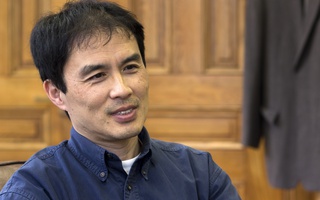Last Thursday morning, Harvard Law School students and faculty arrived on campus to find that a disturbing act had been committed the previous night: Among the hanging portraits of tenured faculty that run along the walls of Wasserstein Hall, black tape had been used to cover the faces of African-American faculty. This incident occurred in the wake of escalating racial tensions at the University of Missouri, Yale University, and other institutions of higher education across the country.
What occurred at the Law School that night is a hate crime—of this fact, there is no doubt, and we commend the Harvard University Police Department for investigating it as such. But looking beyond the surface of this single, visible incident, it is imperative that the Harvard community realize that these issues run deeper than this reprehensible act. The symbolic erasure of the Law School’s black faculty reflects the structural issues that still hinder Harvard from being a community where all of its members are wholly included.
The Law School—an institution that did not hire its first tenured black professor until 1969 and its first tenured woman of color until 1998—still has a faculty composition that is unrepresentative of the diversity of its student population. Of its 88 senior faculty members, only nine are black and less than 25 percent are women. This disparity is at odds with the University’s stated commitment to diversity and inclusion. Moreover, our university has a responsibility to be proactive, rather than reactive, with respect to making this campus a community where all students can feel safe and included. We fail in this mission when we wait until overt acts of hate occur to even consider seriously the broader structural issues that minority students have been reporting.
Moreover, we should recognize that Harvard’s history, with regards to exclusion and marginalization, is not much different from that of Yale or the University of Missouri. The disbelief shown by many that such an act could occur on our campus is regrettable and surprising, especially given the ongoing protests regarding the HLS seal. In the aftermath of this incident, it is clear that the problems and issues going on at peer institutions are not isolated; instead, they are relevant to us as well.
By Thursday afternoon, the black tape meant to erase the Law School’s black faculty presence in Wasserstein was replaced by post-it messages of love and solidarity from students. In the face of such a disgraceful act, we consider these students’ outpouring of support for their black faculty to be especially notable and praiseworthy.
We urge the broader Harvard community to follow their example by affirming now, as always, that black lives matter. We urge the Harvard community to proactively work to examine, address, and dismantle the structural factors that continue to exclude and marginalize minority students and faculty. The first step in solving any problem is to recognize that the problem exists: When minority students at Harvard report experiencing racism, marginalization, and isolation on a regular basis, our university community’s first reaction cannot be to cast doubt on those experiences. To disregard racism and marginalization as valid, lived experiences on this campus is to put black tape over Harvard’s history and the structural issues that that history produced. If Harvard is to succeed in becoming an inclusive campus, inclusivity must truly become an indispensable and persistent fiber within the fabric of our institution.
Read more in Opinion
Loving the WestRecommended Articles
-
 Few in Number, Harvard's Minority Faculty Face Additional Burdens
Few in Number, Harvard's Minority Faculty Face Additional Burdens -
Gathering Discusses Mental Health Issues Facing MinoritiesStudents, alumni, and mental health professionals gathered to discuss the unique mental health struggles that can affect minority students in a “lunch and learn” session on Saturday afternoon.
-
The Pursuit of DiversityHaving a faculty that reflects Harvard’s increasingly diverse student body is critical, but unfortunately Harvard could be losing numerous qualified minorities due to the current hiring and tenure process.
-
 'Party of One': Diversity and Isolation in Harvard's Faculty
'Party of One': Diversity and Isolation in Harvard's Faculty -
The Advantages of a More Representative FacultyWe hope the University continues its progress in diversifying this institution, in spite of the setbacks, and creates a more perfect union of faculty and students.













